Today’s featured author is Robin Talley, who writes here on Dumbledore from the Harry Potter series.
While the Harry Potter series was still being released, I kept crossing my fingers one of the kids would turn out to be gay.
It didn’t seem that far-fetched an idea. After all, the series was otherwise doing a great job of representing diverse characters.
But more importantly, when I was reading the books for the first time, I was in my early 20s, and I was still getting used to the idea that this whole being-gay thing might indeed be a lifelong deal. I was eagerly looking around for representations of people like me. Seeing gay characters and gay celebrities made me feel normal. It made me feel like someone had noticed I was there.
This applies to other aspects of identity too, of course. When I was a kid, my favorite Smurf was Smurfette and my favorite Thundercat was Cheetara ― because I was a girl, and they were the only female characters on those shows.* When you’re in the process of defining your identity, you can’t help but look for examples in the world around you.
After the release of Goblet of Fire, I held out hope that either Dean Thomas or George Weasley, both of whom appeared to be conspicuously dateless for the Yule Ball, might be somewhere on the LGBT spectrum. And after Order of the Phoenix came out, introducing us to Luna Lovegood and Nymphadora Tonks, well, it seemed like J.K. Rowling was just taunting me. **
But ultimately all four of those characters were shown to be hetero. And then Deathly Hallows came and went without any acknowledgement of other sexualities.
And I thought, “Ah, well.” It certainly didn’t keep me from enjoying the books. Plus, by that point several years had passed, and I’d stopped eagerly seeking out gay characters at every turn. But I was disappointed that the opportunity to show queerness among such a broad and interesting cast of characters had been missed.
And then, a few months after that last book’s release, J.K. Rowling casually dropped the news that Dumbledore was gay, and had been in love with the dark wizard Grindelwald.
My first thought on hearing the news was, “Wait. What?”
My seconds was, “Oh. This makes so much more sense now.”
The relationship between Dumbledore and Grindelwald was one of the most interesting subplots of Deathly Hallows. But it was a little hard for a reader like me to relate to. I’ve never had the Crazy Lust For Power that those two apparently shared. I have, however, had the Crazy Lust For The Absolutely Wrong Person, and have found myself doing really stupid things as a result.
But I didn’t get to know about that dimension of Dumbledore and Grindelwald’s relationship when I was reading Deathly Hallows for the first time. Because it wasn’t included in the book.
We don’t know exactly why the HP books failed to mention Dumbledore’s gayness, and I don’t think it’s really worth speculating about here. It might’ve been the publisher’s call. It might’ve been authorial self-censorship due to concerns about the potential public response. It might’ve been the result of tough decision-making about how much content include in an already-very-long book. We’ll probably never know all the answers on this point.
But oh, how I wish it had been included in the book. I wish Dumbledore had casually mentioned it to Harry during one of their many long chats in books 1-6. “You know, I always did think that Hamish McFarlan of the Montrose Magpies Quidditch team was quite fit,” or some such thing. They could’ve left it at that, as a non-issue. Or Rita Skeeter’s 900-page expose of Dumbledore’s life in book 7 could’ve discussed his sexuality along with all his other supposed secrets and lies.
Outing Dumbledore would have had two key benefits:
1. It would’ve made Deathly Hallows a stronger book, because readers would have had better context for understanding Dumbledore’s relationship with Grindelwald.
2. Readers of the book ― kids and adults alike, gay and straight alike ― would’ve seen a major gay character in the biggest book series of all time.
When people talk about gay visibility? This is what they’re talking about.
Dumbledore is the biggest badass of all time. He eats dark wizards for breakfast. He dictates battle strategy and mentors orphans and invents gadgets and writes public policy and runs a school full of ornery teenagers, all at the same time.
And he’s a great big homo.
Imagine how different things might have been if the millions of people who read the Potter series ― the entire generation of kids around the world who grew up on it ― all knew that.
As authors, we always have to make decisions about how much detail to include and how much to leave out. These are not easy decisions to make. I always think of that line from Wonder Boys about how writers don’t need to include the genealogy of everyone’s horses.
And yet, if you have a character who’s LGBTQ, I think you have an obligation to your readers to tell them that.
There aren’t enough LGBTQ characters in children’s lit right now. And we’re the ones who can do something about it. We’re the people writing the books the next generation of teenagers will read.
Of course it isn’t always easy to find a way to work it in. It can be challenging if your LGBTQ character isn’t the protagonist, and especially if the character’s sexual orientation or gender identity isn’t directly relevant to the plot.
It can also be intimidating. We all live in fear of being accused of tokenism, of writing to stereotypes, of conforming to trends. Often, it’s just a lot easier not to put openly LGBTQ characters into our books.
So it might take some work. But it’s worth the effort.
My favorite example of an offhand inclusion of a queer character’s queerness is in How to Ditch Your Fairy by Justine Larbalastier.*** This (awesome) story includes a best friend character, Rochelle, whose non-straightness is completely irrelevant to the story, but is nonetheless is specified in a totally organic way in the middle of an unrelated scene:
“Cassie-Ann was in final year A-stream basketball. … Rochelle’d had a crush on her for as long as I could remember and was mournful that the odds of being promoted from B-stream to A-stream basketball while still only a first year were vastly low, in the vicinity of zero, in fact. She would have to wait until she graduated and hope that some day they wound up on the same team.”
When I read that paragraph, it really stood out to me both as an author and as an LGBT reader. Suddenly Rochelle was much more important in my eyes than she had been in the 95 pages preceding this paragraph. Because now, Rochelle and I had something important in common. Smack in the middle of a book about a heterosexual protagonist with a heterosexual crush, there was a major character who was like me. (There are other mentions of minor characters who are in same-sex relationships throughout the book, by the way ― another tactic I love because it does a great job of establishing the book’s universe as one in which sexual orientation is a non-issue.)
But of course, I’m not the audience for your book. Kids are your audience. And that’s why this matters so much for YA writers. That’s why I think you have to tell your readers there are queer people in your book. Even if it means rewriting that scene you’ve already rewritten seven times, if that’s what it takes to work it in.
Because some kid somewhere could pick up your book and see, for the first time ever, a character who’s like her. Or a straight kid could see, for the first time ever, an LGBTQ character he can relate to ― and then realize that LGBTQ people aren’t so different from him after all.
And that’s a goal even Dumbledore would find worthwhile.
———
*Because it was the 80s. Yay for 21st-century cartoon diversity!
**By the way, lest you think I was alone in these speculations, any cursory examination of the various Potter-related websites from that era will quickly prove otherwise. Which characters held gayness potential was one of the hottest debate topics once upon a time.
***Justine has also written some really interesting stuff on her blog about visibility, especially regarding race. I often refer back to her “Why My Protags Aren’t White” post when I’m trying to figure out how to develop and describe my characters.
Robin Talley always writes about LGBTQ protagonists, so she doesn’t have this problem, but she likes to give people unsolicited advice about it anyway, because that’s just how she rolls. Visit her at www.robintalley.com or on Twitter at @robin_talley.
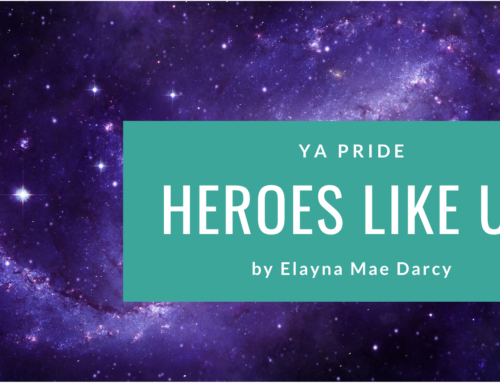
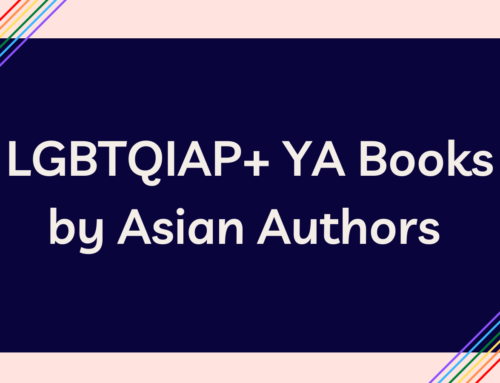
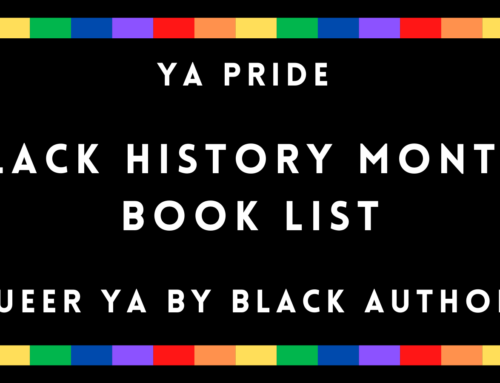
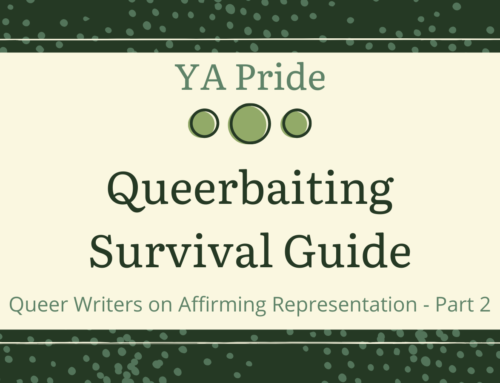
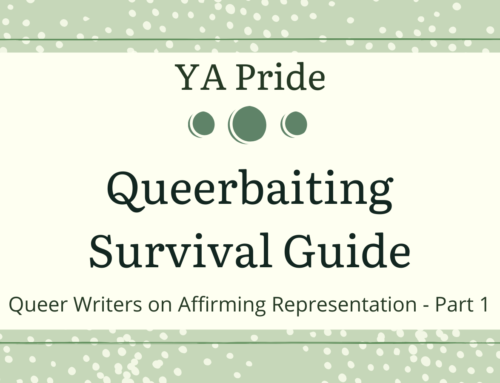
Great post, Robin! I admit that I’d harbored secret hopes that Hermione would turn out gay. Oh well. 😉 Dumbledore was a pleasant surprise, though.
I fully agree that as authors it’s important to “out” our characters to the readers, especially in YA fiction. It’s hard and confusing enough being a teenager. Good role models are so important for gay teens. There can never be enough.
Hermione shared a room for 6 years with two of the hottest girls in school. She may have wound up hetero, but I think there’s a very strong possibility she didn’t know that from the outset. If you get my drift. 😉
I love this post. I wasn’t too bothered when JKR told us that Dumbledore was gay — in fact, I thought it was pretty cool. But you’re absolutely right: visibility is important.
Great example of good visibility from How to Ditch Your Fairy (I’ll have to check that book out!) — another one that comes to mind is Jenna from Rachel Hawkins’s Hex Hall. Jenna mentions her love affair with a female character as part of her backstory, and Sophie, the protag, comments that she’s never knowingly had a gay friend before. It’s honest, and it’s clear, and it’s… otherwise a total non-issue. I loved seeing that.
Ooh — I have been meaning to read Hex Hall but now I have all the more reason! Thanks for sharing that, very interesting!
[…] I guest blogged at Gay YA: While the Harry Potter series was still being released, I kept crossing my fingers one of the kids […]
I love this post and like you I was really wishing that it would have been in the book and oh it did make so much sense after!
Yeah, it just seemed like such a shame. I mean, still awesome books, but still…
This is a wonderful post Robin and really flagged up the issue for me. I always thought it was great how Rowling just casually mentioned that, and was surprised at what a big deal it became. But it would have been amazing and such great exposure to so many people if she had included it.
Weirdly enough I’ve always thought gay secondary characters can in a way be more important than primary in that you can include them without making the book be perceived as about ‘homosexual issues’, which, don’t get me wrong, we need, but makes it seem a separate issue. Including them as secondary characters normalizes them, and shows them as part of everyday life to readers who may not have otherwise thought to read about gay characters. Hence why to me Alec from The Mortal Instruments actually left a deeper impression than Paul from Boy Meets Boy (though I do love it as well).
And I apologize for rambling! ;D